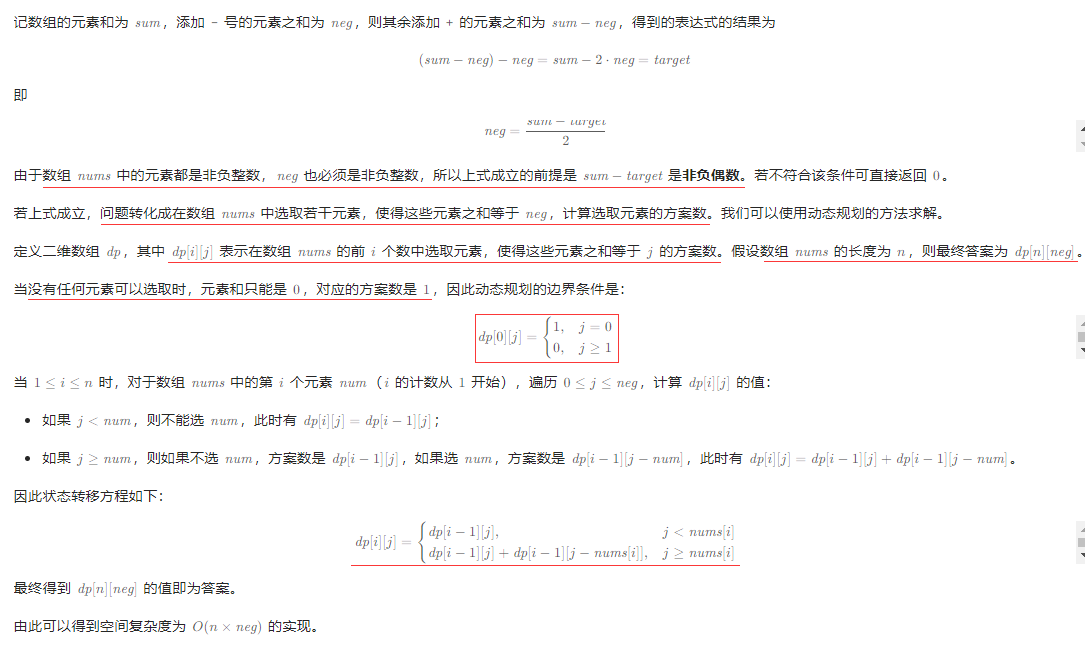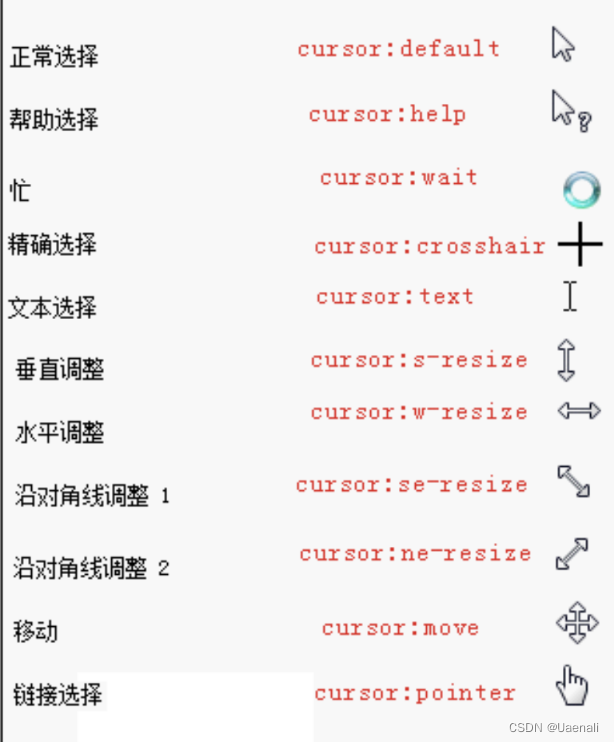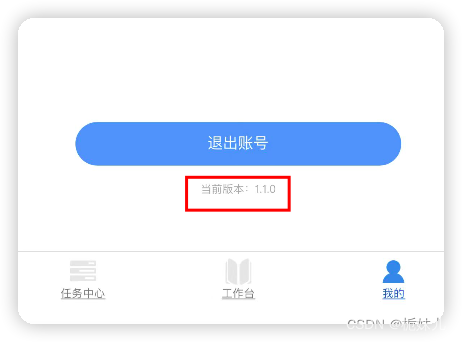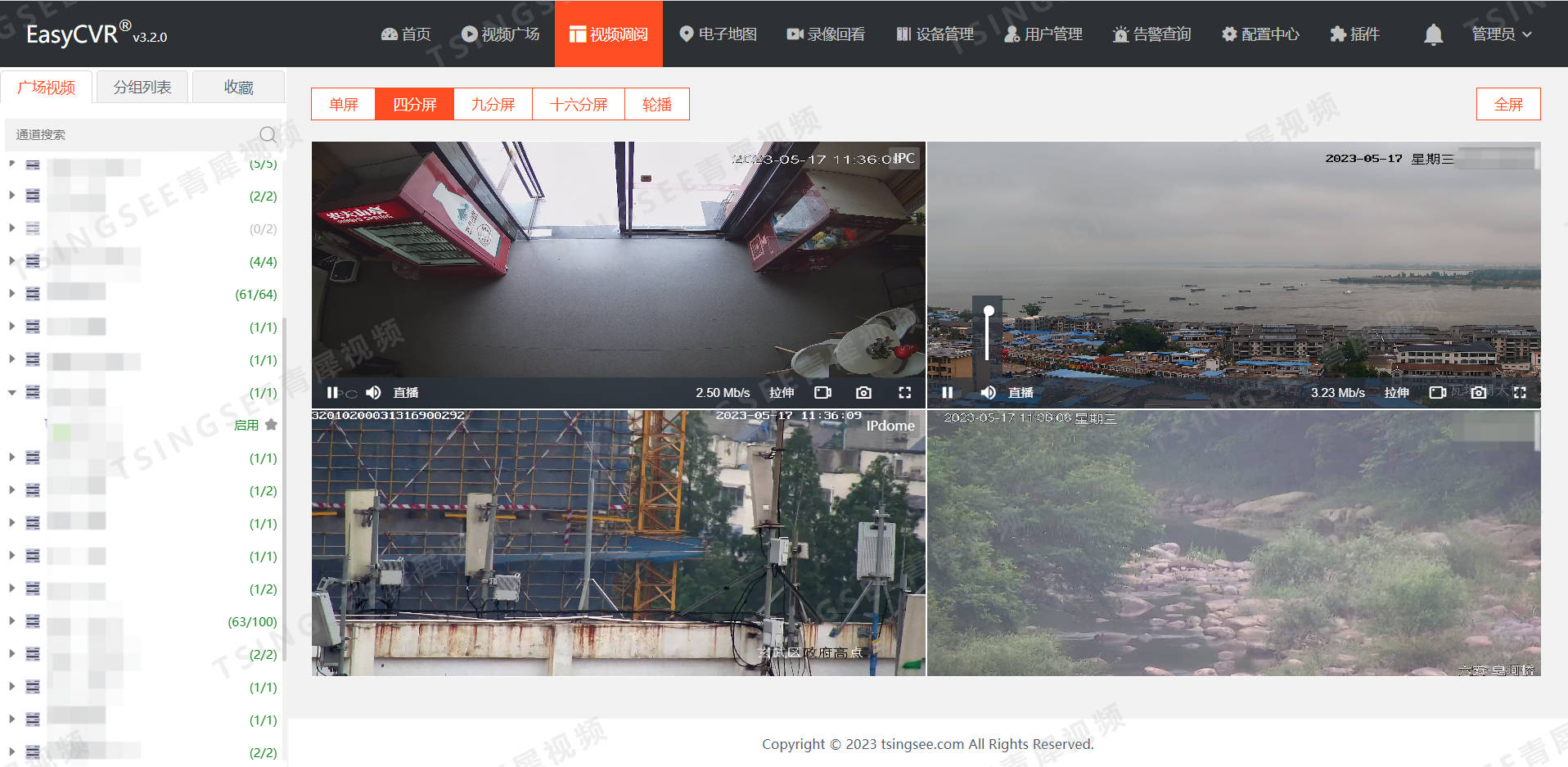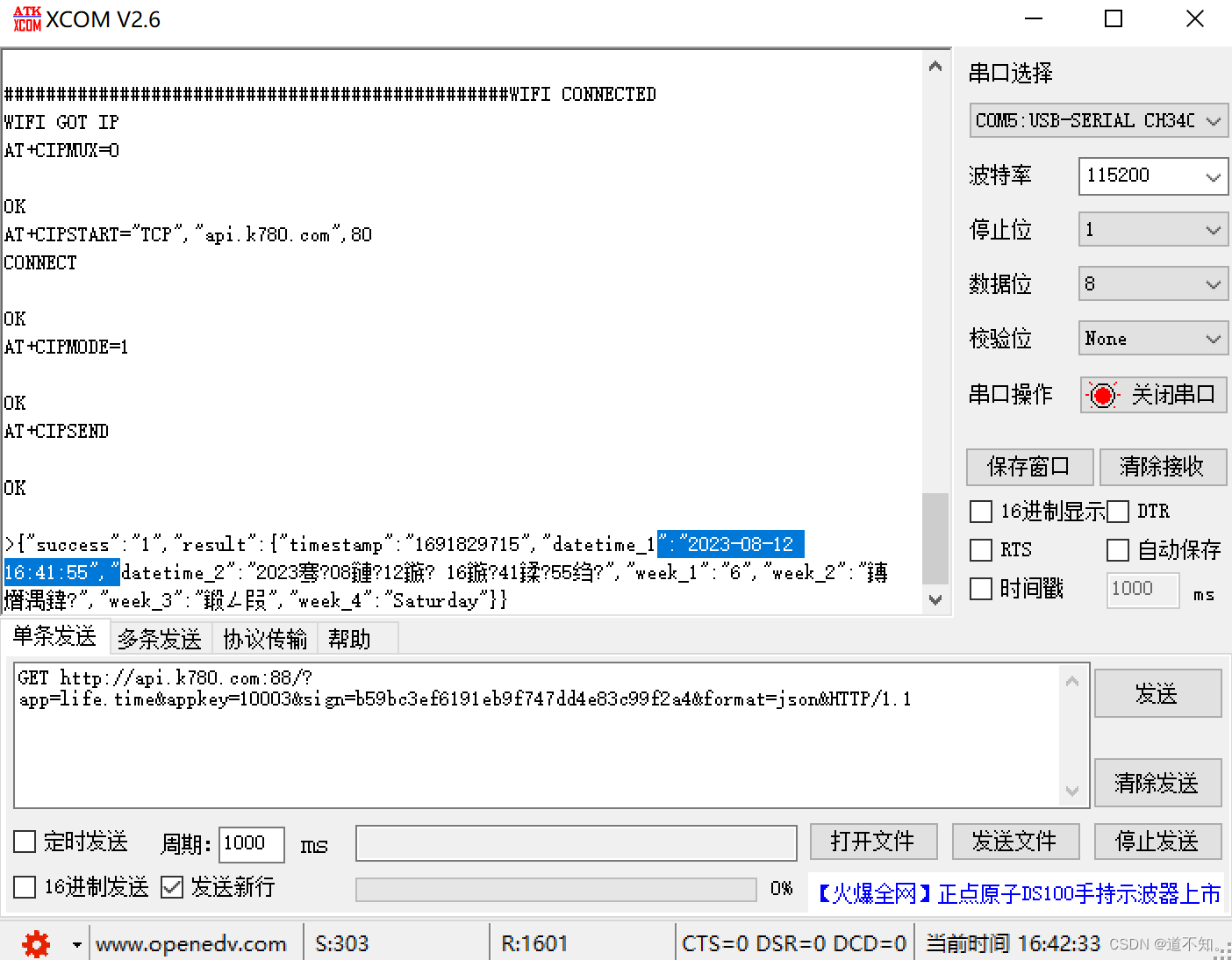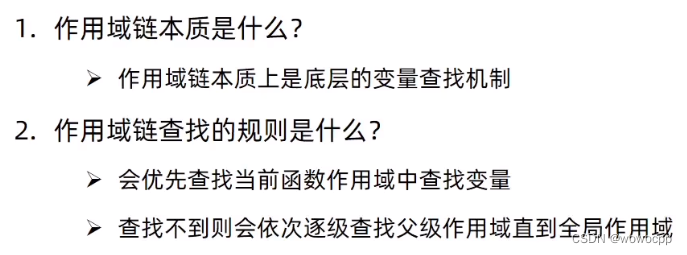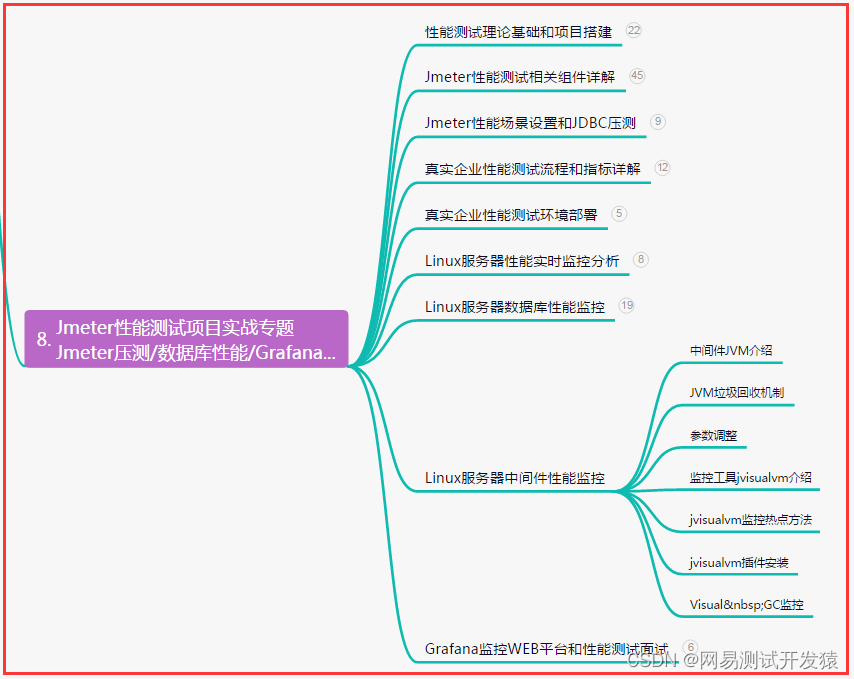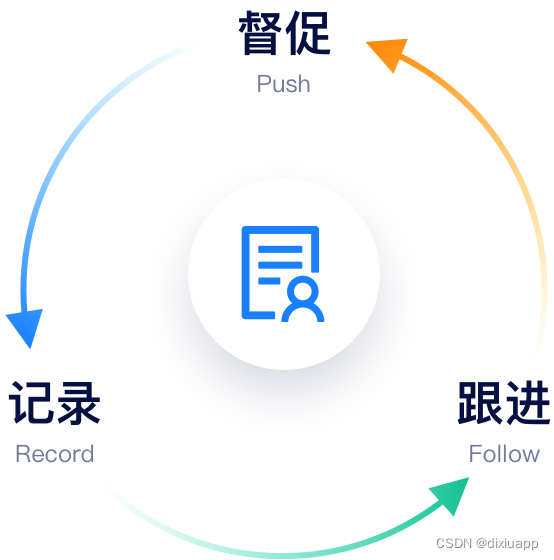🦒JdbcTemplate
📕实际需求
实际需求: 如果程序员就希望使用spring框架来做项目, spring框架如何处理对数据库的操作呢?
- 方案1: 使用前面做项目开发的
JdbcUtils类 - 方案2: 其实spring提供了一个操作数据库(表)功能强大的类
JdbcTemplate. 我们可以同ioc容器来配置一个jdbcTemplate对象, 使用它来完成对数据库表的各种操作.
📕官方文档
官方文档: spring-framework-5.3.8\docs\javadoc-api\index.html
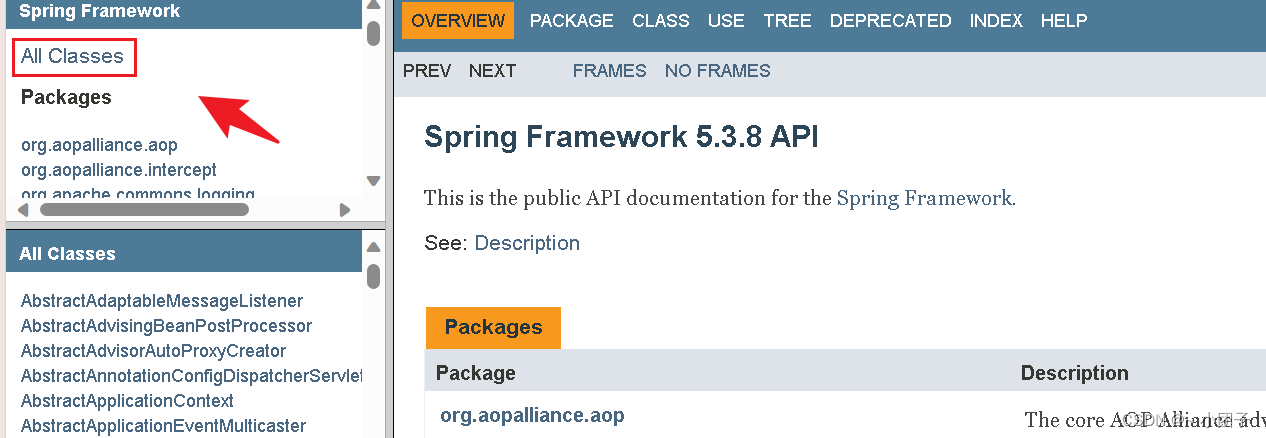
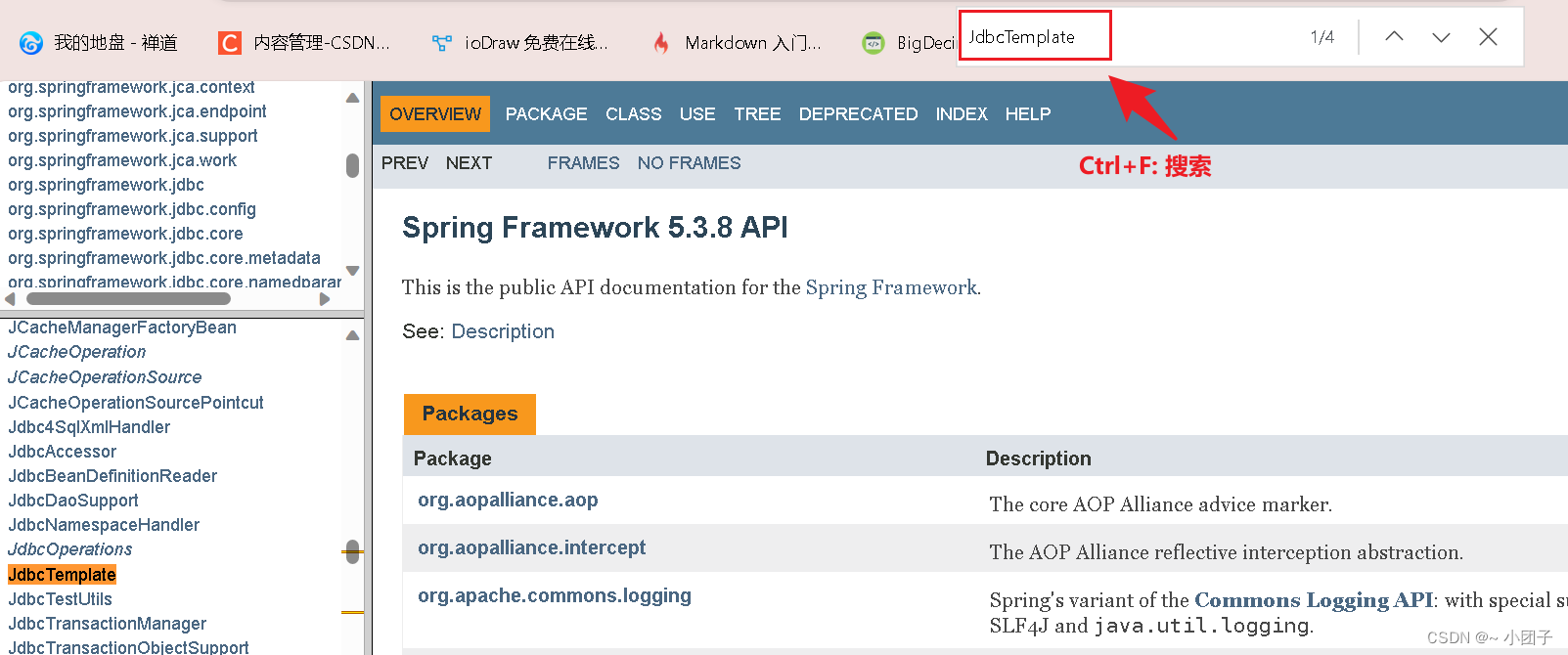
📕基本介绍
1.通过Spring可以配置数据源, 从而完成对数据表的操作
2.JdbcTemplate是Spring提供的访问数据库的技术. 可以将JDBC的常用操作封装为模板方法.
📕搭建环境
1.引入使用JdbcTemplate需要的jar包

2.创建数据库spring和表monster
1)管理员打开cmd窗口, 开启数据库服务. 别忘了, 这很重要 安装Mysql5.7
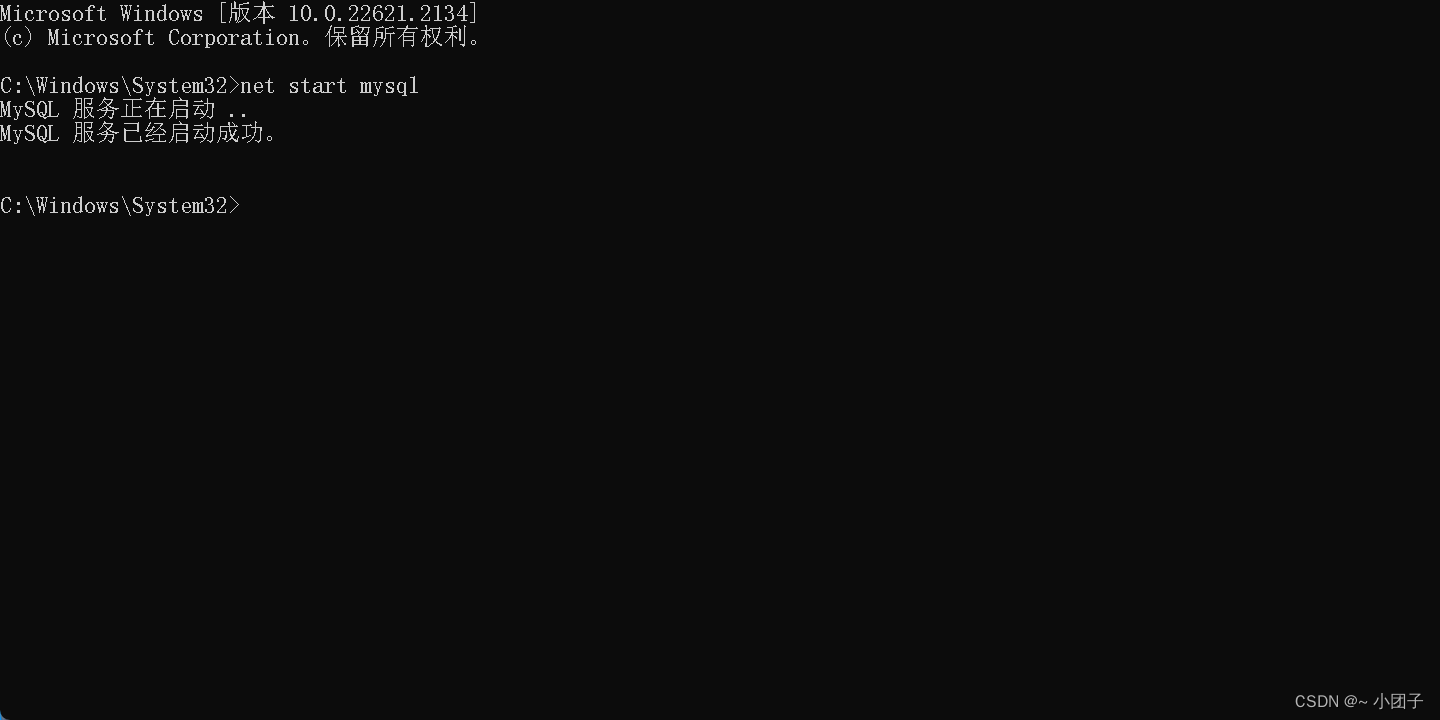
2)sql代码
-- 创建数据库
CREATE DATABASE spring;
USE spring;
-- 创建表
CREATE TABLE monster (
id INT UNSIGNED PRIMARY KEY,
`name` VARCHAR(64) NOT NULL DEFAULT '',
skill VARCHAR(64) NOT NULL DEFAULT ''
)CHARSET=utf8;
INSERT INTO monster VALUES(100, '孙悟空', '金箍棒');
INSERT INTO monster VALUES(200, '红孩儿', '三昧真火');
INSERT INTO monster VALUES(300, '铁扇公主', '芭蕉扇');
📕配置DataSource
3.创建配置文件 src/dbc.properties
JdbcTemplate会使用到DataSource, 而DataSource可以拿到连接去操作数据库
找到前面我们搭建的spring项目, 在src下新建jdbc.properties

jdbc.user=root
jdbc.pwd=zzw
jdbc.driver=com.mysql.jdbc.Driver
jdbc.url=jdbc:mysql://localhost:3306/spring
4.创建配置文件 src/JdbcTemplate_ioc.xml
通过属性文件配置bean
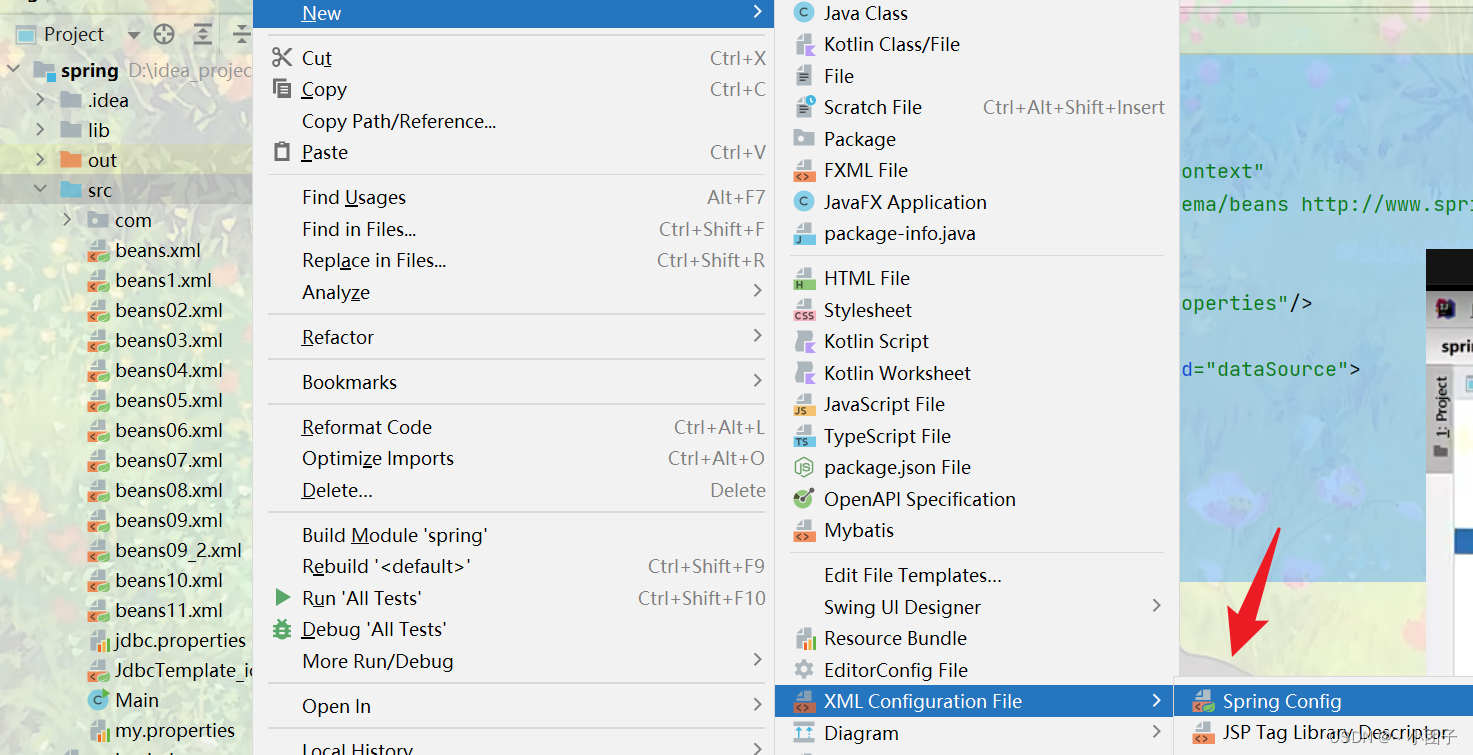
JdbcTemplate_ioc.xml
<?xml version="1.0" encoding="UTF-8"?>
<beans xmlns="http://www.springframework.org/schema/beans"
xmlns:xsi="http://www.w3.org/2001/XMLSchema-instance"
xmlns:context="http://www.springframework.org/schema/context"
xsi:schemaLocation="http://www.springframework.org/schema/beans http://www.springframework.org/schema/beans/spring-beans.xsd http://www.springframework.org/schema/context https://www.springframework.org/schema/context/spring-context.xsd">
<!--引入外部的jdbc.properties文件-->
<context:property-placeholder location="classpath:jdbc.properties"/>
<!--配置数据源对象-DataSource-->
<bean class="com.mchange.v2.c3p0.ComboPooledDataSource" id="dataSource">
<!--给数据源对象配置属性值-->
<property name="user" value="${jdbc.user}"/>
<property name="password" value="${jdbc.pwd}"/>
<property name="driverClass" value="${jdbc.driver}"/>
<property name="jdbcUrl" value="${jdbc.url}"/>
</bean>
</beans>
5.在com.zzw.spring.test包下新建测试类JdbcTemplateTest
public class JdbcTemplateTest {
@Test
public void testDataSourceByJdbcTemplate() {
//获取容器
ApplicationContext ioc =
new ClassPathXmlApplicationContext("JdbcTemplate_ioc.xml");
//在这里打个断点
System.out.println("ok");
}
}
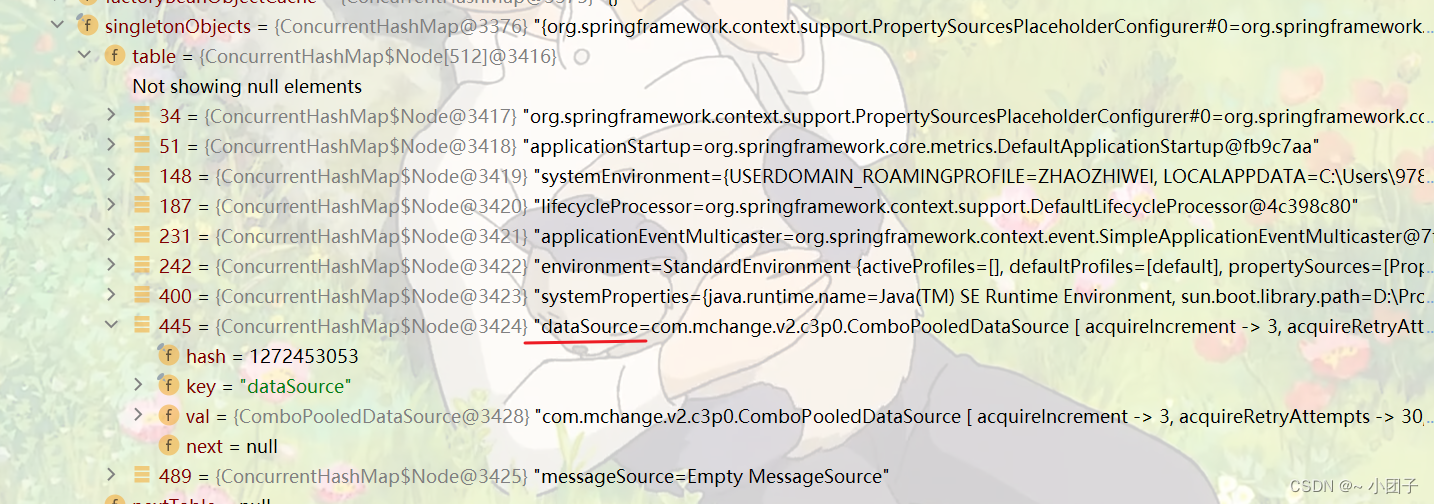
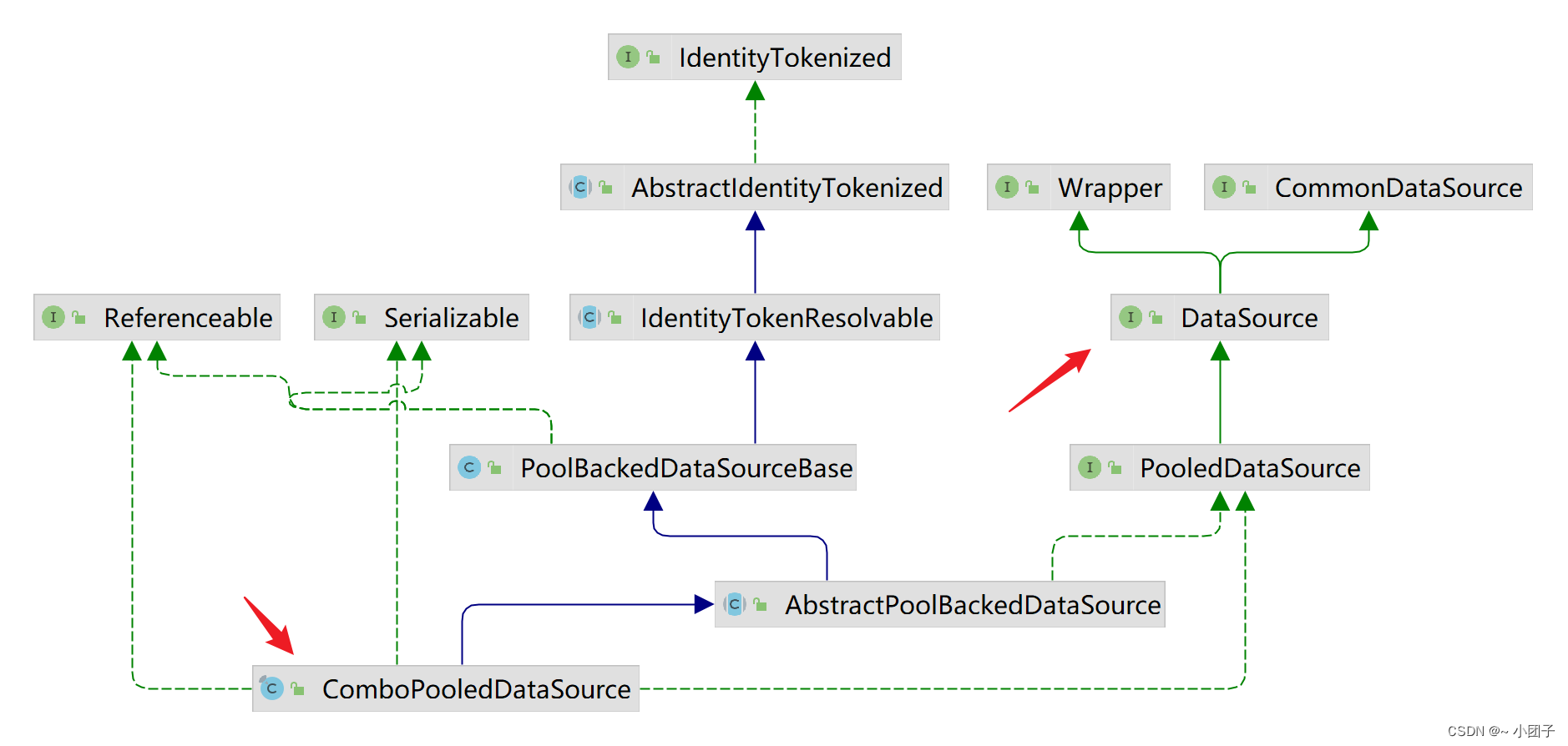
public class JdbcTemplateTest {
@Test
public void testDataSourceByJdbcTemplate() {
//获取容器
ApplicationContext ioc =
new ClassPathXmlApplicationContext("JdbcTemplate_ioc.xml");
//因为ComboPooledDataSource类实现了DataSource接口, 所以我们可以用接口类型来获取 comboPooledDataSource对象
DataSource dataSource = ioc.getBean(DataSource.class);
Connection connection = dataSource.getConnection();
//获取到connection=com.mchange.v2.c3p0.impl.NewProxyConnection@2cd2a21f
System.out.println("获取到connection=" + connection);
connection.close();
System.out.println("ok");
}
}
📕添加数据
6.配置JdbcTemplate_ioc.xml, 将数据源分配给JdbcTemplate bean
JdbcTemplate_ioc.xml
<?xml version="1.0" encoding="UTF-8"?>
<beans xmlns="http://www.springframework.org/schema/beans"
xmlns:xsi="http://www.w3.org/2001/XMLSchema-instance"
xmlns:context="http://www.springframework.org/schema/context"
xsi:schemaLocation="http://www.springframework.org/schema/beans http://www.springframework.org/schema/beans/spring-beans.xsd http://www.springframework.org/schema/context https://www.springframework.org/schema/context/spring-context.xsd">
<!--引入外部的jdbc.properties文件-->
<context:property-placeholder location="classpath:jdbc.properties"/>
<!--配置数据源对象-DataSource-->
<bean class="com.mchange.v2.c3p0.ComboPooledDataSource" id="dataSource">
<!--给数据源对象配置属性值-->
<property name="user" value="${jdbc.user}"/>
<property name="password" value="${jdbc.pwd}"/>
<property name="driverClass" value="${jdbc.driver}"/>
<property name="jdbcUrl" value="${jdbc.url}"/>
</bean>
<!--配置JdbcTemplate对象-->
<!--JdbcTemplate会使用到DataSource, 而DataSource可以拿到连接去操作数据库-->
<bean class="org.springframework.jdbc.core.JdbcTemplate" id="jdbcTemplate">
<!--给JdbcTemplate对象配置dateSource-->
<property name="dataSource" ref="dataSource"/>
</bean>
</beans>
测试通过JdbcTemplate对象完成添加数据
public class JdbcTemplateTest {
@Test
public void addDataByJdbcTemplate() {
//获取到容器
ApplicationContext ioc =
new ClassPathXmlApplicationContext("JdbcTemplate_ioc.xml");
//获取JdbcTemplate对象, 这里我们先 debug一下
System.out.println("ok");
}
}
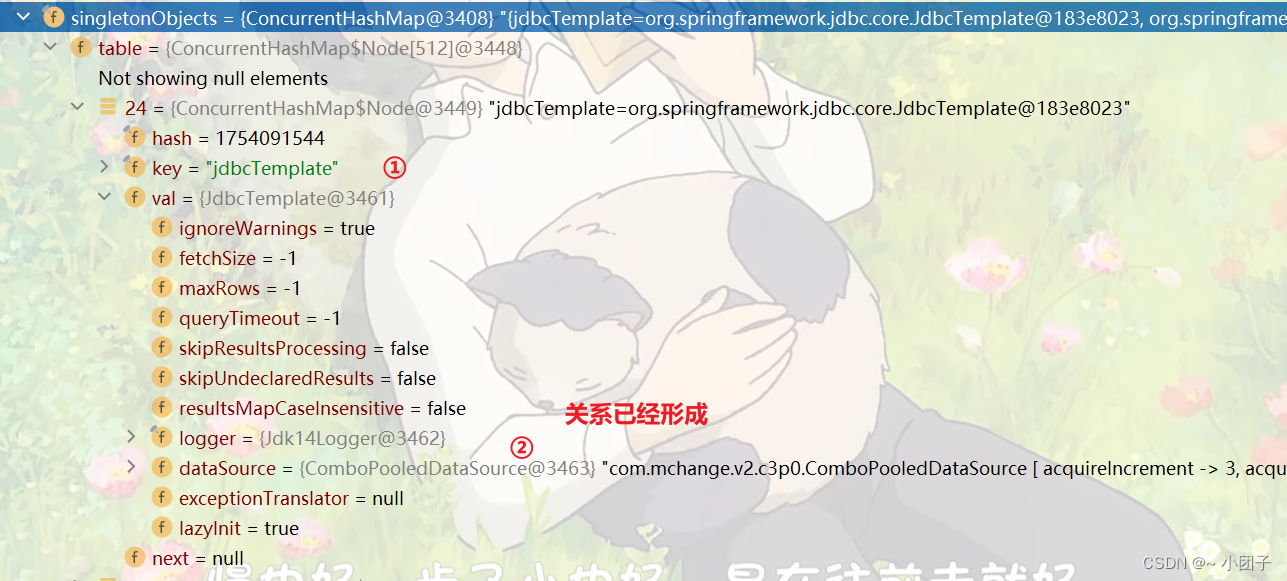
public class JdbcTemplateTest {
@Test
public void addDataByJdbcTemplate() {
//获取到容器
ApplicationContext ioc =
new ClassPathXmlApplicationContext("JdbcTemplate_ioc.xml");
//获取JdbcTemplate对象 [按类型获取]
JdbcTemplate jdbcTemplate = ioc.getBean(JdbcTemplate.class);
//1.添加方式①
//String sql = "insert into monster values(400, '陆小千', '魔幻手机')";
//jdbcTemplate.execute(sql);
//2.添加方式② ?占位符, 可以防止sql注入
String sql = "insert into monster values(?, ?, ?)";
//affected表示 执行后表受影响的行数
int affected = jdbcTemplate.update(sql, 500, "金角大王", "紫金红葫芦");
System.out.println("add success afftected=" + affected);
}
}
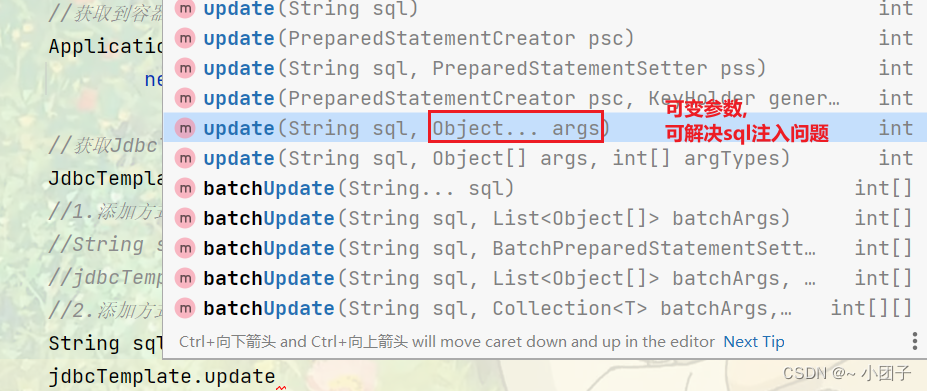
📕修改数据
public class JdbcTemplateTest {
//测试通过JdbcTemplate对象完成修改数据
@Test
public void updateDataByJdbcTemplate() {
//获取到容器
ApplicationContext ioc =
new ClassPathXmlApplicationContext("JdbcTemplate_ioc.xml");
//获取JdbcTemplate对象
JdbcTemplate jdbcTemplate = ioc.getBean(JdbcTemplate.class);
//组织SQL
String sql = "update monster set skill = ? where id = ?";
//假使修改后的数据和修改前的数据一样, 也认为是修改成功了一条语句, affected返回 1, 因为它没有判断要修改的数据
int affected = jdbcTemplate.update(sql, "美人计", 300);
System.out.println("update ok affected=" + affected);
}
}
📕批量处理
public class JdbcTemplateTest {
//测试通过JdbcTemplate对象完成批量添加数据
//这里有一个使用API的技巧
/**
* 说明
* 1.对于某些类, 有很多API, 使用的buzhou
* 2.使用技巧: (1)先确定API名字 (2)根据API提供相应的参数 [组织参数]
* (3)把自己的调用思路清晰 (4)根据API, 可以推测类的用法和功能
*/
@Test
public void addBatchDataByJdbcTemplate() {
//获取到容器
ApplicationContext ioc =
new ClassPathXmlApplicationContext("JdbcTemplate_ioc.xml");
//获取JdbcTemplate对象
JdbcTemplate jdbcTemplate = ioc.getBean(JdbcTemplate.class);
//1.先确定, 猜测API名称 update -> batchUpdate [如果出现问题,再重新找]
//public int[] batchUpdate(String sql, List<Object[]> batchArgs){}
//2.准备参数 [构建实参]
String sql = "insert into monster values(?, ?, ?)";
List<Object[]> batchArgs = new ArrayList<>();
batchArgs.add(new Object[]{600, "鼠鼠", "偷吃粮食"});
batchArgs.add(new Object[]{700, "猫猫", "抓老鼠"});
//3.调用
//说明: 返回结果是一个数组, 每个元素对应上面的sql语句对表的影响记录数
int[] ints = jdbcTemplate.batchUpdate(sql, batchArgs);
//输出
for (int anInt : ints) {
System.out.println("anInt=" + anInt);
}
System.out.println("batch add ok~");
}
}
📕查询后封装成对象
在spring项目中我们已经创建了Monster实体类
这里有一个知识点: 给字段起别名, 应对应实体类的属性. 我们在前面的家居购项目中遇到过

public class JdbcTemplateTest {
/**
* 查询id=100的monster对并封装到Monter实体对象[在实际开发中非常有用]
*/
@Test
public void selectDataByJdbcTemplate() {
//获取到容器
ApplicationContext ioc =
new ClassPathXmlApplicationContext("JdbcTemplate_ioc.xml");
//获取JdbcTemplate对象
JdbcTemplate jdbcTemplate = ioc.getBean(JdbcTemplate.class);
//1.确定API query -> queryForObject
//public <T> T queryForObject(String sql, RowMapper<T> rowMapper, @Nullable Object... args)
//2.准备参数
String sql = "SELECT id AS monsterId, `name`, skill FROM monster WHERE id = 100";
//使用了RowMapper 接口来对返回的数据, 进行一个封装 底层使用的反射 -> setter方法
//细节: 你查询的记录的表的字段需要和 Monster对象的字段名保持一致
RowMapper<Monster> rowMapper = new BeanPropertyRowMapper<>();
//3.调用
Monster monster = jdbcTemplate.queryForObject(sql, rowMapper);
//输出
System.out.println("monster=" + monster);
System.out.println("query ok~");
}
}
结果报错: java.lang.IllegalStateException: Mapped class was not specified
修正代码
RowMapper<Monster> rowMapper = new BeanPropertyRowMapper<>(Monster.class);
运行结果

📕查询后封装成对象集合

public class JdbcTemplateTest {
/**
* 查询id>=200的monster并封装到Monster实体对象
*/
@Test
public void selectMulDataByJdbcTemplate() {
//获取到容器
ApplicationContext ioc =
new ClassPathXmlApplicationContext("JdbcTemplate_ioc.xml");
//获取JdbcTemplate对象
JdbcTemplate jdbcTemplate = ioc.getBean(JdbcTemplate.class);
//1.确定API query
//public <T> List<T> query(String sql, RowMapper<T> rowMapper, Object... args)
//2.准备参数
String sql = "SELECT id AS monsterId, `name`, skill FROM monster WHERE id >= ?";//这个?填进入也可以
RowMapper<Monster> rowMapper = new BeanPropertyRowMapper<>(Monster.class);
//3.调用
List<Monster> monsterList = jdbcTemplate.query(sql, rowMapper, 200);
//输出
for (Monster monster : monsterList) {
System.out.println("monster=" + monster);
}
}
}
测试结果
monster=Monster{monsterId='200', name='红孩儿', skill='三昧真火'}
monster=Monster{monsterId='300', name='铁扇公主', skill='美人计'}
monster=Monster{monsterId='400', name='陆小千', skill='魔幻手机'}
monster=Monster{monsterId='500', name='金角大王', skill='紫金红葫芦'}
monster=Monster{monsterId='600', name='鼠鼠', skill='偷吃粮食'}
monster=Monster{monsterId='700', name='猫猫', skill='抓老鼠'}
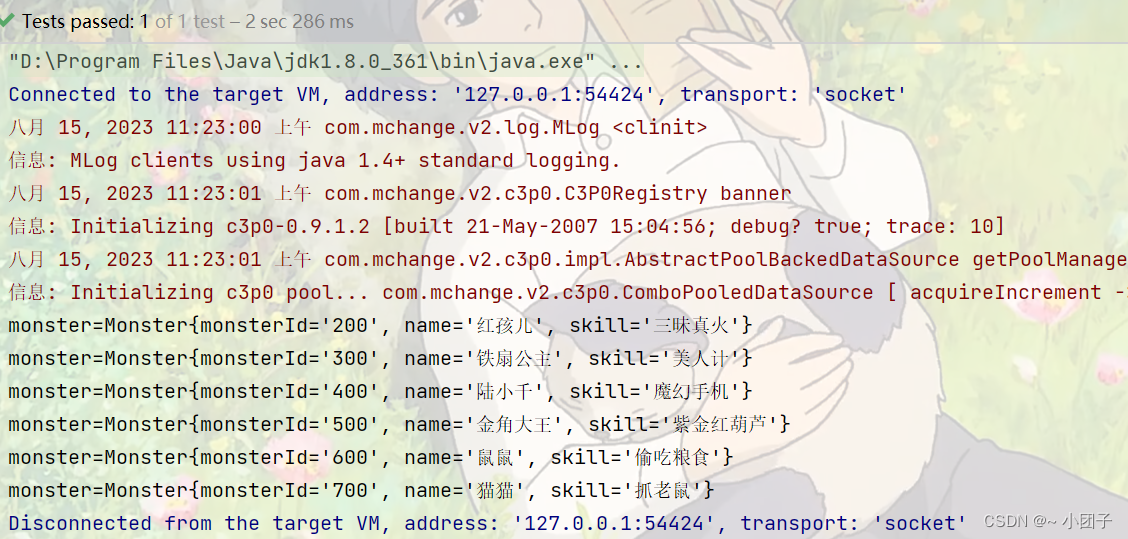
📕返回单行单列
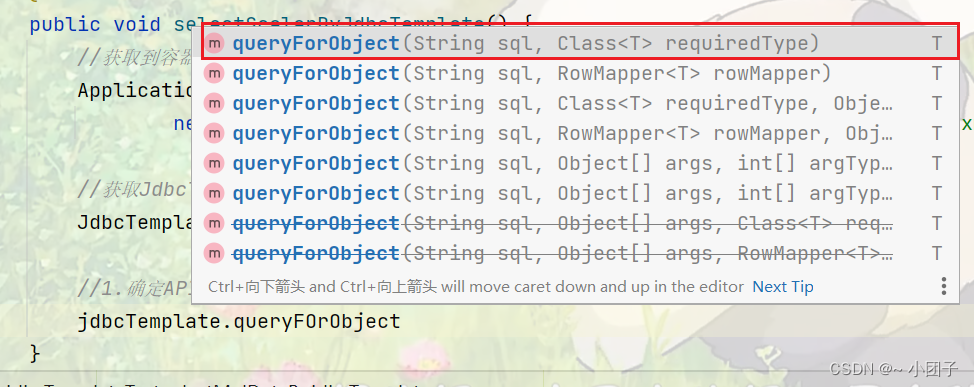
public class JdbcTemplateTest {
/**
* 查询返回结果只有一行一列的值
*/
@Test
public void selectScalarByJdbcTemplate() {
//获取到容器
ApplicationContext ioc =
new ClassPathXmlApplicationContext("JdbcTemplate_ioc.xml");
//获取JdbcTemplate对象
JdbcTemplate jdbcTemplate = ioc.getBean(JdbcTemplate.class);
//1.确定API query -> queryObject
//public <T> T queryForObject(String sql, Class<T> requiredType, @Nullable Object... args)
//2.准备参数
String sql = "SELECT `name` FROM monster WHERE id = 100";
//Class<T> requiredType 表示你返回的单行单列的数据类型
//3.调用
String name = jdbcTemplate.queryForObject(sql, String.class);
//输出
System.out.println("name=" + name);
System.out.println("ok~");
}
}
📕具名参数
配置JdbcTemplate_ioc.xml, 使用到NamedParameterJdbcTemplate
<?xml version="1.0" encoding="UTF-8"?>
<beans xmlns="http://www.springframework.org/schema/beans"
xmlns:xsi="http://www.w3.org/2001/XMLSchema-instance"
xmlns:context="http://www.springframework.org/schema/context"
xsi:schemaLocation="http://www.springframework.org/schema/beans http://www.springframework.org/schema/beans/spring-beans.xsd http://www.springframework.org/schema/context https://www.springframework.org/schema/context/spring-context.xsd">
<!--引入外部的jdbc.properties文件-->
<context:property-placeholder location="classpath:jdbc.properties"/>
<!--配置数据源对象-DataSource-->
<bean class="com.mchange.v2.c3p0.ComboPooledDataSource" id="dataSource">
<!--给数据源对象配置属性值-->
<property name="user" value="${jdbc.user}"/>
<property name="password" value="${jdbc.pwd}"/>
<property name="driverClass" value="${jdbc.driver}"/>
<property name="jdbcUrl" value="${jdbc.url}"/>
</bean>
<!--配置JdbcTemplate对象-->
<!--JdbcTemplate会使用到DataSource, 而DataSource可以拿到连接去操作数据库-->
<bean class="org.springframework.jdbc.core.JdbcTemplate" id="jdbcTemplate">
<!--给JdbcTemplate对象配置dateSource-->
<property name="dataSource" ref="dataSource"/>
</bean>
<!--配置NamedParameterJdbcTemplate对象-->
<bean class="org.springframework.jdbc.core.namedparam.NamedParameterJdbcTemplate" id="namedParameterJdbcTemplate">
<!--通过构造器, 设置数据源-->
<constructor-arg name="dataSource" ref="dataSource"/>
</bean>
</beans>

public class JdbcTemplateTest {
/**
* 使用Map传入具名参数完成操作, 比如添加
*/
@Test
public void testDataByNamedParameterJdbcTemplate() {
//获取到容器
ApplicationContext ioc =
new ClassPathXmlApplicationContext("JdbcTemplate_ioc.xml");
//得到NamedParameterJdbcTemplate bean
NamedParameterJdbcTemplate namedParameterJdbcTemplate = ioc.getBean(NamedParameterJdbcTemplate.class);
//1.确定API update
//public int update(String sql, Map<String, ?> paramMap)
//2.准备参数 [:my_id, :name, :skill] 要求按照规定的名字来设置参数
String sql = "insert into monster values(:id, :name, :skill)";
Map<String, Object> paramMap = new HashMap<>();
//给paramMap填写数据
paramMap.put("id", 800);
paramMap.put("name", "二郎神");
paramMap.put("skill", "哮天犬");
//3.调用
int affected = namedParameterJdbcTemplate.update(sql, paramMap);
//输出
System.out.println("add ok affected=" + affected);
}
}
📕sqlparametersource
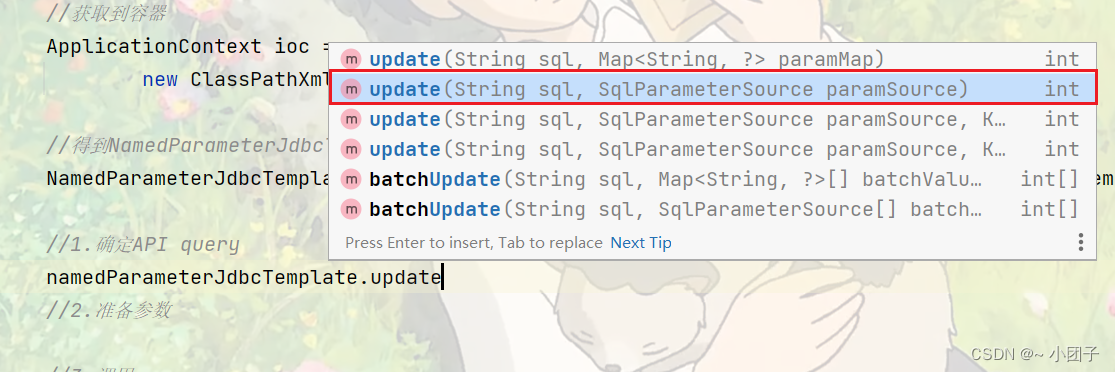

public class JdbcTemplateTest {
/**
* 使用sqlparamtersource 来封装具名参数, 还是添加一个Monster
*/
@Test
public void operDataBySqlparametersource() {
//获取到容器
ApplicationContext ioc =
new ClassPathXmlApplicationContext("JdbcTemplate_ioc.xml");
//得到NamedParameterJdbcTemplate bean
NamedParameterJdbcTemplate namedParameterJdbcTemplate = ioc.getBean(NamedParameterJdbcTemplate.class);
//1.确定API query
//public int update(String sql, SqlParameterSource paramSource)
//public BeanPropertySqlParameterSource(Object object)
//2.准备参数
String sql = "insert into monster values(:id, :name, :skill)";
Monster monster = new Monster(900, "妲己", "魅惑");
SqlParameterSource sqlParameterSource = new BeanPropertySqlParameterSource(monster);
//3.调用
int affected = namedParameterJdbcTemplate.update(sql, sqlParameterSource);
//输出
System.out.println("add ok affected=" + affected);
}
}
结果报错 No value supplied for the SQL parameter 'id': Invalid property 'id' of bean class [com.zzw.spring.bean.Monster]: Bean property 'id' is not readable or has an invalid getter method: Does the return type of the getter match the parameter type of the setter?
修改代码
String sql = "insert into monster values(:monterId, :name, :skill)";
🥥DAO使用jdbctemplate
在com.zzw.spring.jdbctemplate.dao包下新建MonsterDao
@Repository //将MonsterDao注入到spring容器
public class MonsterDao {
//注入一个属性
@Resource
private JdbcTemplate jdbcTemplate;
//完成保存任务
public void save(Monster monster) {
//组织SQL
String sql = "insert into monster values(?, ?, ?)";
int affteced =
jdbcTemplate.update(sql, monster.getMonsterId(), monster.getName(), monster.getSkill());
System.out.println("affected=" + affteced);
}
}
JdbcTemplate_ioc.xml
<?xml version="1.0" encoding="UTF-8"?>
<beans xmlns="http://www.springframework.org/schema/beans"
xmlns:xsi="http://www.w3.org/2001/XMLSchema-instance"
xmlns:context="http://www.springframework.org/schema/context"
xsi:schemaLocation="http://www.springframework.org/schema/beans http://www.springframework.org/schema/beans/spring-beans.xsd http://www.springframework.org/schema/context https://www.springframework.org/schema/context/spring-context.xsd">
<!--配置要扫描的包-->
<context:component-scan base-package="com.zzw.spring.jdbctemplate.dao"/>
<!--引入外部的jdbc.properties文件-->
<context:property-placeholder location="classpath:jdbc.properties"/>
<!--配置数据源对象-DataSource-->
<bean class="com.mchange.v2.c3p0.ComboPooledDataSource" id="dataSource">
<!--给数据源对象配置属性值-->
<property name="user" value="${jdbc.user}"/>
<property name="password" value="${jdbc.pwd}"/>
<property name="driverClass" value="${jdbc.driver}"/>
<property name="jdbcUrl" value="${jdbc.url}"/>
</bean>
<!--配置JdbcTemplate对象-->
<!--JdbcTemplate会使用到DataSource, 而DataSource可以拿到连接去操作数据库-->
<bean class="org.springframework.jdbc.core.JdbcTemplate" id="jdbcTemplate">
<!--给JdbcTemplate对象配置dateSource-->
<property name="dataSource" ref="dataSource"/>
</bean>
<!--配置NamedParameterJdbcTemplate对象-->
<!--<bean class="org.springframework.jdbc.core.namedparam.NamedParameterJdbcTemplate" id="namedParameterJdbcTemplate">
<!–通过构造器, 设置数据源–>
<constructor-arg name="dataSource" ref="dataSource"/>
</bean>-->
</beans>
测试
public class JdbcTemplateTest {
//测试MonsterDao是否生效
@Test
public void monsterDaoSave() {
//获取到容器
ApplicationContext ioc =
new ClassPathXmlApplicationContext("JdbcTemplate_ioc.xml");
MonsterDao monsterDao = ioc.getBean(MonsterDao.class);
monsterDao.save(new Monster(1000, "女娲", "女娲补天"));
System.out.println("save ok~");
}
}
